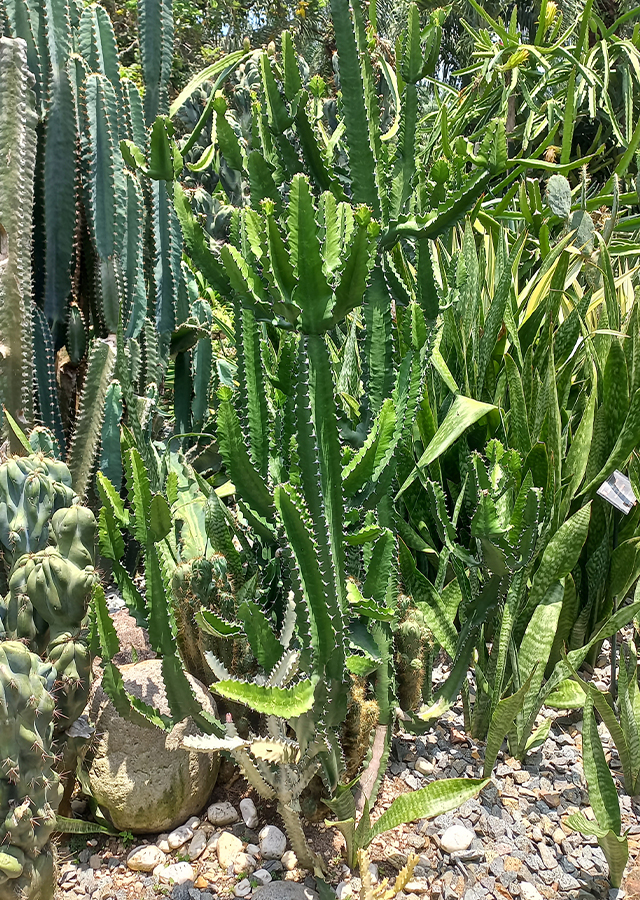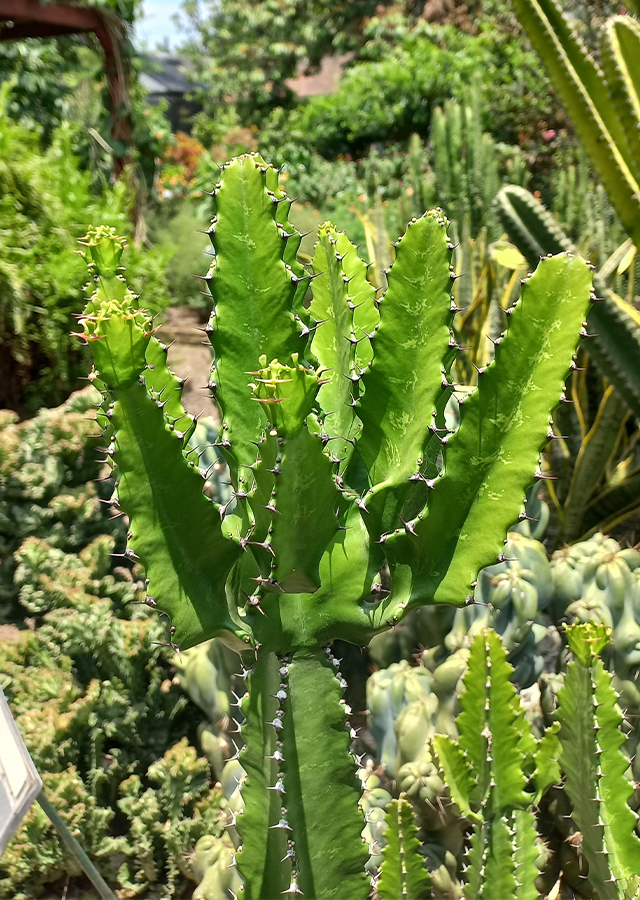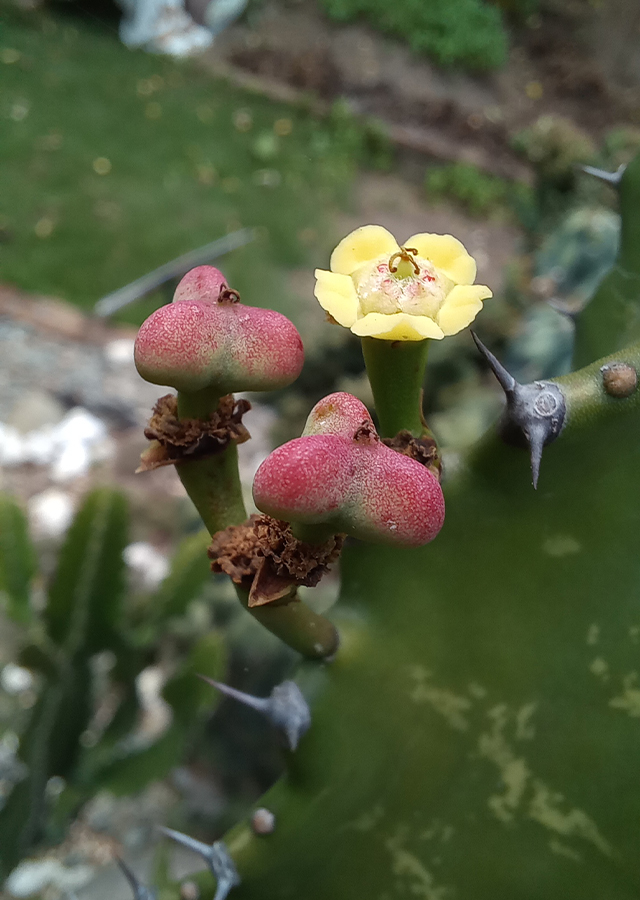Dragon Bones
Euphorbia lactea Haw.
Euphorbiaceae
Location in our garden
Principal



Synonym
Euphorbia lactea Roxb.
Habitus
Succulent. An evergreen, succulent perennial plant that grows up to 5 m tall.
Part Used
Sap
Growing Requirements
Full Sunshine
Need Shade
Drought Resistant
Habitat
Forest
Coastal
Roadside
Shrublands
Grassland
Terrestrial
Overview
Euphorbia lactea is native to Sri Lanka. It has been introuced in tropical and subtropical areas and now it can be found cultivated and naturalized in tropical Asia, tropical America, the West Indies, and many islands in the Pacific Ocean. By 1918 it was reported for Bermuda and by 1920, it was listed as widely established in Bahamas and Cuba. It is used as a poison and a medicine and has environmental uses. It has been widely commercialized as an ornamental plant and due to the presence of spines it is also used as a fence/hedge plant.
Vernacular Names
Candelabro (Spanish), Marmoreuforbia (Swedish), Escambrón (Puerto Rican), Cardón (Cuban), Lechero de lindero (Colombian).
Agroecology
Often grows forming thickets mostly in disturbed sites, abandoned gardens, deciduous forests, coastal forests, and along roadsides. Prefers partial to full sun exposure, on sandy and sandy loam soils with a pH ranging from 6.1 to 7.8, and annual temperature ranges from 17-35 ºC, the average annual precipitation is 750-2,000 mm. This species is well adapted to dry areas and water-scarce habitats.
Morphology
- Root - underground fibfrous roots.
- Stem - 15-20 cm in trunk diameter, with fleshy or succulent stems, much branched, hairless throughout, producing abundant milky sap when injured. Stems with whorls of branches nearly to base but on large plants shedding the spiny tissue and developing a rounded brown, fissured trunk. The 3-angled (sometimes 4-angled) branches are mostly joints 10-30 cm long and 2-5 cm across, slightly shiny dark green, with yellowish or whitish streak in the groove of the axis between the angles. The soft cut branches have a light green outer layer less than <0.5 cm thick, which yields latex, and within whitish watery tissue, slightly bitter. Raised leaf bases 0.5 cm high and about 1-2.5 cm apart along the edges of branches correspond to nodes and bear paired spreading gray spines (stipules).
- Leaves - few, scattered, alternate, minute, stalkless, rounded, slightly shiny green, succulent, slightly thick and shedding early, or absent.
- Flowers - small, yellowish green, borne intermittently in small clusters along the stem’s edge.
- Fruit - capsule, 3 lobes.
Cultivation
- Generative propagation is by seed.
- Vegetative propagation is by cuttings and stem fragments.
Chemical Constituents
Triterpenes and diterpenes (12-Deoxy-4.beta.-hydroxyphorbol-13-dodecanoate-20-acetate-24-methylene cycloartenol, euphorbol hexacosanoate, tinyatoxin, ingenol triacetate, resiniferonol-9,13,14-orthophenyl acetate and 12-deoxyphorbol-13/2-methyl/butyrate-20-acetate).
Traditional Medicinal Uses
- The sap is used in India and in Africa to treat warts and in China to treat skin diseases.
- Study has shown anti-inflammatory activity.
Part Used
Reference Sources
- Baslas, R.K., Gupta, N.C. 1984. Chemical constituents of Euphorbia lactea. Herba Hungarica 23(1-2): 85-88. https://eurekamag.com/research/004/937/004937258.php. 15-08-2022.
- Kew Royal Botanic Gardens. (N0 date). Plants of the World Online: Euphorbia lactea Haw. https://powo.science.kew.org/taxon/urn:lsid:ipni.org:names:347035-1. 15-08-2022.
- National Park of Singapore. (2022). Flora Fauna Web: Euphorbia lactea 'Cristata'.gov.sg/florafau. https://www.nparks.gov.sg/florafaunaweb/flora/2/0/2004. 15-08-2022.
- Sandoval, J. R. (2016). Invasive Species Compendium: Euphorbia lactea (mottled spurge). https://www.cabi.org/isc/datasheet/119812#tosummaryOfInvasiveness. 15-08-2022.
